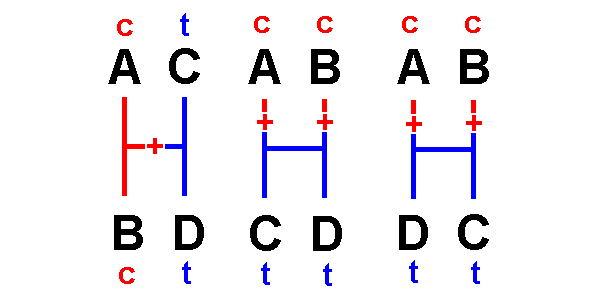
Among
four
taxa A, B, C, & D, there are three
hypotheses
of relationship:
either A is most closely related to B, or to C,
or
to D
We
want to be able to evaluate hypotheses of the form:
"X
and Y are more closely related to each
other
than either is to Z"
The
alternative hypotheses can be shown as networks with branches
and an internode


Positions 1
- 4 are uninformative:
They
give no information about relationships, because
all
hypotheses require the same number of changes,
so
none is more parsimonious
than
the
others.
Positions 5,
6
&
7 are informative:
Two taxa share one
state, other two share another
They give information
about
relationships,
because
one hypothesis requires fewer changes than the
others
&
is therefore more parsimonious than the others
Position
5
indicates
that A & B are most closely related:
The
first hypothesis can explain the distribution of nucleotides
with a single
change,
the latter two require two changes each.
The
first hypothesis is a more parsimonious
explanation
of the data than the others.

By the same logic:
Position
6
indicates
that A & C are most closely related.
Position
7
indicates
that A & D are most closely related.
[Homework:
for the three networks above,
sketch the changes required by sites of Positions 6 &
7]